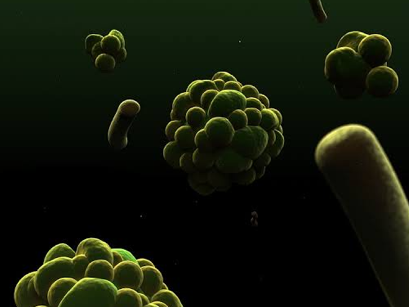Cell: Fundamental Unit of Life- Winspire Magazine

We know that cell is a fundamental unit of life. In this article, we will learn about what is a cell, types of cells and its nature and functions. So, let’s get into the article.
What is a cell?
- Cell, in biology, is the basic membrane-bound unit which contains the fundamental molecules of life, of which all the living organisms are composed. One single cell is a complete organism by itself, for example, bacterium or yeast.
- Other cells acquire some specialized functions as they get matured enough. These cells along with cells become the building blocks of a large multicellular organism, such as humans and other living organisms.
- Although cells are much larger than that of atoms, they are very small. Smallest known cells are a group of bacteria which are tiny, named mycoplasmas, some of these single-celled organisms are as small as 0.2 μm in diameter (1μm is about 0.000039 inches), with a total mass of 10−14 gram which is equal to that of 8,000,000,000 hydrogen atoms.
- Human cells typically have a mass, which is 400,000 times larger than the mass of a single mycoplasma bacterium, even human cells are only about 20 μm across. It would require a sheet of 10,000 cells of humans to cover the head of a needle, and each human organism is composed of more than 30,000,000,000,000 cells.
- This article discusses the cell both as an individual unit and as a contributing part of a larger organism. As an individual unit, the cell is capable of metabolizing its nutrients, synthesizing many types of molecules, providing its energy, and replicating itself to produce succeeding generations. It can be viewed as an enclosed vessel, within which many chemical reactions take place simultaneously. These reactions are under very precise control so that they contribute to the life and procreation of the cell.
In a multicellular organism, cells become specialized to perform different functions through the process of differentiation. To do this, each cell keeps in constant communication with its neighbours. As it receives nutrients from and expels wastes into its surroundings, it adheres to and cooperates with other cells. Groups of similar cells form tissues and form an organ, which carries the functions necessary to sustain the life of an organism.
Two Basic Types of Cells
- Prokaryotic cells are evolutionarily ancient. They were here first and for billions of years were the only form of life. Today most life is prokaryotic, and these cells are supremely successful. All bacteria and bacteria-like Archaea are prokaryotic organisms. Eukaryotes can be single-celled or multicellular organisms.
- Eukaryotic cells are more complex, having evolved from a prokaryote-like predecessor. Most of the living things that we are typically familiar with are composed of eukaryotic cells; animals, plants, fungi and protists.
The Nature And Functions of a Cells.
- A cell is covered by a plasma membrane, which forms a selective layer that allows waste products to leave and nutrients to enter. The interior of a cell is organized into many organelles or compartments, each of which is surrounded by a separate membrane.
- One major organelle is the nucleus. It contains the genetic information necessary for cell growth and reproduction. Every cell contains only one nucleus, whereas other types of compartments are present in multiple copies in the cytoplasm or cellular contents.
- Organelles include lysosomes, which digest unwanted materials within the cell; mitochondria, which are responsible for the energy transactions necessary for cell survival; and the endoplasmic reticulum and the Golgi apparatus, which play essential roles in the internal organization of a cell by synthesizing selected molecules and then sorting, processing, and directing them to their proper locations.
- Besides, plant cells contain chloroplasts, which are responsible for photosynthesis, where, by the energy of the sunlight is used by plants to convert molecules of water (H2O) and carbon dioxide (CO2) into carbohydrates. Between all these compartments is the space in the cytoplasm called the cytosol.
- The cytosol contains an organized framework of fibrous molecules that constitute the cytoskeleton, which gives a cell its shape, enables organelles to move within the cell and provides a mechanism by which the cell itself can move. The cytosol also contains more than 10,000 different kinds of molecules that are involved in cellular biosynthesis, the process of making large biological molecules from small ones.
- Specialized organelles are a characteristic of cells of organisms known as eukaryotes. In contrast, cells of organisms known as prokaryotes do not contain organelles and are generally smaller than eukaryotic cells. However, all cells share strong similarities in the biochemical function.
Get Free “Winspire Digital Worksheets of worth Rs. 129 Value”
Please enter your details to get the monthly E – Booklet + absolutely premium content to expand your horizons.


